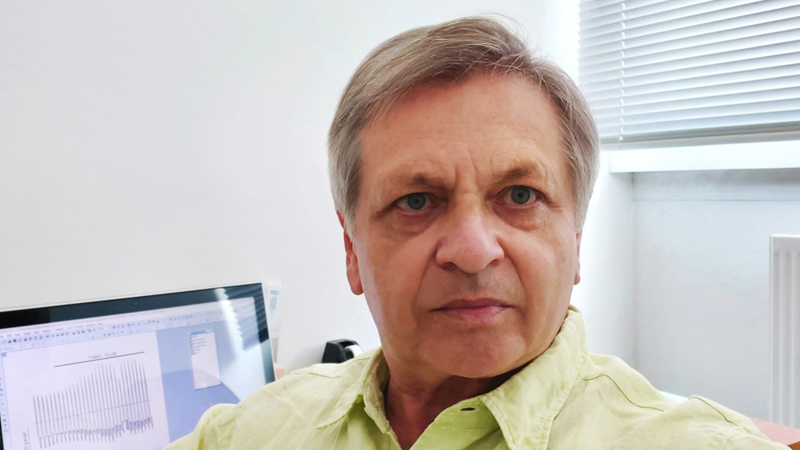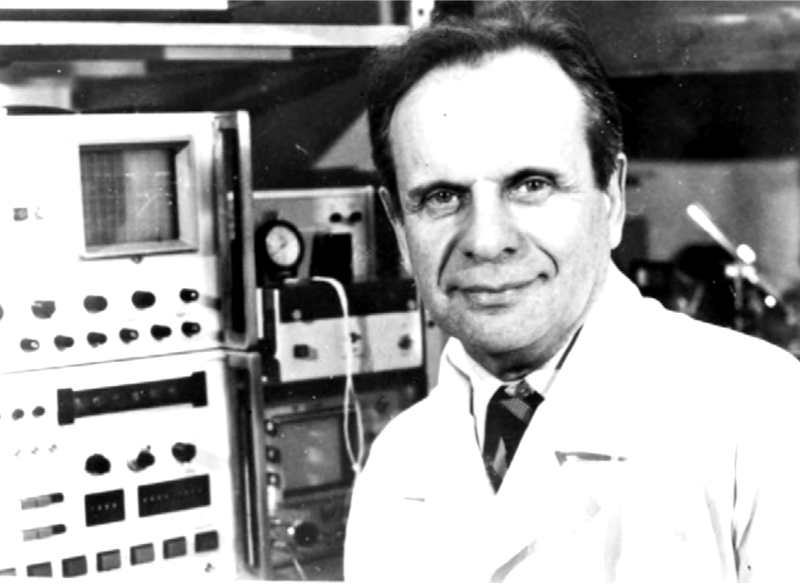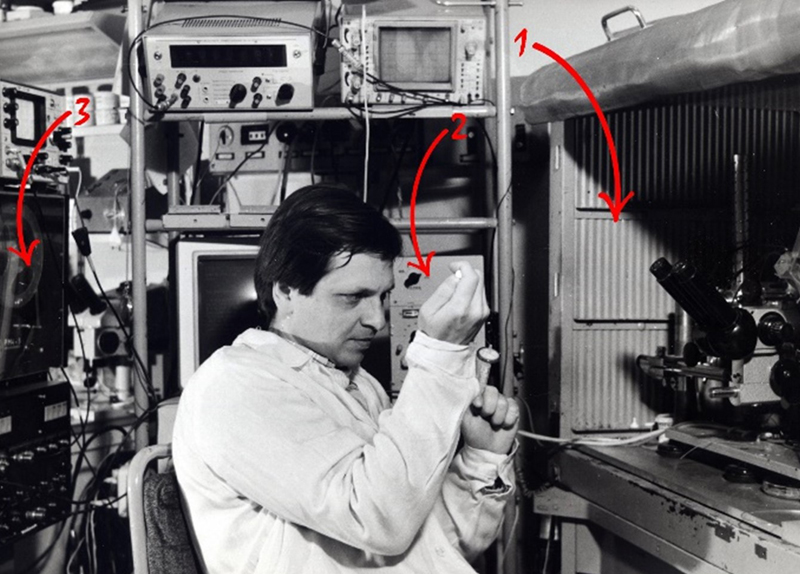Life as a Ukrainian scientist: an interview with Yaroslav Shuba MAE#
In an important interview conducted by the Cardiff Knowledge Hub , newly-elected MAE Yaroslav Shuba charts his life as a scientist, from the Soviet era to independent Ukraine.
, newly-elected MAE Yaroslav Shuba charts his life as a scientist, from the Soviet era to independent Ukraine.
About Professor Yaroslav Shuba MAE#
Professor Yaroslav Shuba, is a physiologist from Ukraine working in the Bogomoletz Institute of Physiology (BIPh) in the National Academy of Sciences of Ukraine (NASU) in Kyiv. He is Head of the Department of Neuromuscular Physiology.
Professor Shuba was elected as a member of the National Academy of Sciences of Ukraine in 2021 and to the Academia Europaea in 2022. He has been listed as a noteworthy physiologist by Marquis Who’s Who.
In 2003, Professor Shuba was awarded the State Prize of Ukraine in the field of Sciences and Technologies and in 2010, he received the Honour of excellence from the Ukrainian Parliament. In 2013, he won the National Academy of Sciences of Ukraine’s ‘P.G. Kostyuk Prize’ in Physiology, Biophysics and Neurophysiology.
The interview#
This is an abridged version of the interview. The full interview is available by clicking on the button below.
How did you start your scientific career? Was there anybody who influenced you the most?
After graduation in 1977, I became a technician at the Department of Gas Electronics, studying the interaction of high-energy ion beams with matter, at the Institute of Physics of the National Academy of Sciences of Ukraine (NASU, back then the Academy of Sciences of the Ukrainian SSR). Experimental setups were gigantic there and all this machinery needed megavolts and megawatts of electricity to operate. So, experiments had to be planned in advance and they had to be conducted by a whole group of people – a single person could not operate the setup alone. And that was what I did not like, since in such a situation you cannot be the master of your time and do experiments whenever you like. Nevertheless, I always eagerly participated in the preparation and conduct of experiments, and became a co-author of my first three scientific papers published in USSR physics journals.
There was also another good experience. These gigantic setups I worked on needed a lot of custom-made parts and components, which were manufactured onsite in a specialised machine shop. By having to oversee this production, I learned how to operate different metalworking machines and how to use them to build various things. This appeared to be very useful in life, as I knew how to make basically everything myself – without having to ask anybody.
Both my parents were biologists. Although they never interfered with my work as a plasma physicist, they always tried to develop my interest in biology, particularly biophysics. I remember how my father was always initiating conversations about nerve electrical impulse propagation, underlying transmembrane ions movements and Hodgkin-Huxley theory, and he encouraged me to read literature about them.
1980 was the year when my father became increasingly more persistent in trying to convince me that this was a good chance for me to combine physics and biology, and to become a membrane biophysicist. His major arguments were, first, that I would become a graduate student of the Department of Membrane Biophysics at the extremely prestigious Moscow Institute of Physics and Technology (MIPT), which had just been created as the experimental base of BIPh, and, second, that I could still be a physicist but simply studying biological phenomena related to bioelectrogenesis.
A visit to BIPh NASU and the interview with Prof. Kostyuk, who was both BIPh director and appointed head of the new MITP department, reassured me that it may be the right thing to do. First, I saw “intracellular dialysis/perfusion” rigs aimed at studying transmembrane ionic currents in isolated nerve cells, and since they could be operated by one or maximum two persons, they corresponded to my inner urge to do experiments independently of others whenever I liked and could. Second, Prof. Kostyuk said that he preferred young associates with a physics rather than biology background. He reasoned that electrophysiology was the kind of science that required building lots of unique electronic equipment (at least at that time), an understanding and modelling of electric phenomena, and if it came to the lack of some knowledge, it was always easier for a physicist to learn and understand biology than for a biologist to learn and understand physics. So, in 1980 I became a graduate in biophysics at the Department of Membrane Biophysics of MIPT, working under the supervision of Prof. P.G. Kostyuk at his Department of General Physiology at BIPh NASU. Sounds complicated, right? But that is how it was. Legally, I was a graduate student of MIPT receiving my fellowship from Moscow, but physically I was working at BIPh NASU in Kyiv.”
Could you tell us what it was like being a PhD student in biophysics in Ukraine in the early 1980s?
And that was exactly the situation I faced in 1980. Prof. Kostyuk proposed that I should focus on investigating the mechanism of the so called “modification of neuronal voltage-gated calcium channels selectivity by EGTA”. But, he said, all intracellular perfusion setups in the Department were occupied “round the clock, 7 days a week”, and in order to conduct my experiments I would need to build my own. And this meant, he continued, that I had to ask people and look around (including closets) for pieces of equipment, parts and components that were sitting unused, collect them, then build from scratch an electronic amplifier from the most basic elements (resistors, capacitances, operational amplifiers, etc.), put everything together as a functional setup, test it and then proceed with my experiments.
Fortunately, these tasks did not scare me. By mobilising all the skills and experience acquired during my previous tenure at the Institute of Physics in the “do-it-yourself” business, in about 3 months I was ready to do experiments on my own setup (see photograph below). Frankly, this was very useful experience – first, because I perfectly knew how things worked and how they were built; second, I never had a problem with troubleshooting; third, I could always upgrade my setup to meet new experimental needs.
After building my own setup, all that was needed was to use it intensively to generate results. And I had no problem with that, defending my PhD in 1983, just 3 years after admission to the programme. I even published a paper with my results on how calcium ions themselves regulated the selectivity of calcium channels in the Journal of Membrane Biology. Somebody may say “big deal, just one paper in JMB in 3 years”! But those who might say this have no idea what it was like publishing something in the Soviet Union. An “iron curtain” meant not only having no chance to travel abroad, but also the impossibility to publish something in the open press without being granted permission from the “competent authorities”. Many good scientists did not want to go through all this hassle, which is why their research did not receive sufficient attention from the worldwide scientific community. But Prof. Kostyuk was very persistent in persuading his associates to take all possible efforts to publish abroad. And as time showed, this strategy was right because the great achievement of our Institute during those times was to receive international recognition.”
What projects are you working on now?
Fortunately, the USA and European Union established several research grant programmes specifically aimed at fostering collaboration between scientists from the former Soviet Union and those from the USA and EU countries. The main aim of these programmes was to keep researchers from the former USSR, especially those who were somehow linked with the Soviet military complex, from immigrating to “rogue states”. These programmes did not prevent the “brain drain”, but provided at least some support to those who opted to stay. I got several such collaborative grants, which helped me to continue my scientific carrier in Ukraine and to stay in permanent professional contact with my friends and colleagues abroad.
I was working on a variety of projects, the most important of which included the hormonal and pharmacological regulation of cardiac potassium channels, selectivity, permeation and pharmacology of T-type calcium channels, ion channel involvement in carcinogenesis, and in urinary bladder dysfunction. We are trying to pursue a whole new direction, which we call “X-opto-pharmacology”. But I don’t want to get into any specifics beforehand. Hopefully, you will learn about it from our publications.”
You said that a lot of Ukrainian researchers left the country and are now working abroad. So, what about the next generation of Ukrainian scientists? Are Ukrainian students interested in pursuing scientific career, in particular in biophysics?
Russia’s aggression against Ukraine is the major geopolitical disaster of today. What is your opinion on the situation, how can it be resolved and how do you see the future of Ukrainian science?
When the USSR, as a state based on an unviable social system, disintegrated in 1991 many were surprised that it went relatively peacefully. They hoped that the NIS* of the former Soviet Union, among which was Ukraine, would find new forms of collaboration with each other and move towards higher levels of prosperity, while remaining good neighbours. But this group did not include those hardcore Russians with imperialist thinking in the Russian Federation, which became the successor to what was once the USSR. Led by Putin and his clique, they immediately started to hatch plans and make preparations for taking revenge for the defeat of the Soviet Union in the Cold War and to restore not only its boundaries, but potentially its dominance over the former Warsaw Pact countries. And Ukraine became the first and primary target of such policies, which eventually culminated in the current war. The world community should not be fooled by the official appeals of Putin and his clique, who claim a threat from NATO and far-fetched oppression by Ukraine of the Russian-speaking population, as reasons for their “limited military operation”. Their real aim, which they hesitate to proclaim openly because it sounds too Nazi-like, is a “final solution to the Ukrainian question”, which means the elimination of Ukrainian statehood, seizing Ukrainian territory, the extermination or displacement of nationally-conscious Ukrainians, whilst turning the rest back into Malorosy. Thus, Ukraine has no choice but to win this war with the help of the rest of the world, and then to remain strong in order to coexist with such an aggressive neighbour and deter it from further aggressive actions. And good science is an integral component of being strong.
Ukraine and the Ukrainian people are demonstrating an unprecedented resolve and courage in this war in protecting their sovereignty, integrity and independence, which has earned them the well-deserved admiration in the world. However, it comes at the cost of great human and material losses, with the scientific sphere in particular being hit very hard. The scientific infrastructure in the Eastern part of Ukraine is basically ruined, while institutions in other parts of the country are barely functioning because of the threats of air raids, reduced funding and because many researchers simply fled the country. It is difficult to talk about returning to our usual scientific activities before the security situation returns to some kind of normality. But then Ukrainian science will need help to revive itself. And not in the form of position openings or exchanges for Ukrainian researchers to go to Western scientific institutions (further exacerbating the already considerable brain drain), but in the form of grant programmes specifically aimed at involving Ukrainian laboratories in collaborative research with Western partners. A good example was an EU programme called INTAS (International Association for the Promotion of Cooperation with Scientists from the New Independent States of the former Soviet Union), which was established in 1993 to foster collaboration between scientists from the NIS of the former USSR and EU countries. Unfortunately, this programme was closed in 2006, but it may now serve as a template for creating new ones for Ukraine. Various wealthy countries may design similar programmes of their own. This will help Ukrainian science to start again on a new financial and organisational foundation, which will eventually benefit world science. Some steps in this respect have already been taken in Ukraine. Most importantly, the National Research Foundation of Ukraine has been created which, despite some teething problems, is expected to replace the old, Soviet-style, distributive system of science funding with a new competitive one.”
- The Newly Independent States of the former Soviet Union are Armenia, Azerbaijan, Belarus, Georgia, Kazakhstan, Kyrgyzstan, Moldova, Russia, Tajikistan, Turkmenistan, Ukraine and Uzbekistan.
Read the full interview with Yaroslav Shuba at the Cardiff Knowledge Hub website. #
at the Cardiff Knowledge Hub website. #
Appeals from Ukrainian scientists#
The National Research Foundation of Ukraine has initiated a series of video appeals of Ukrainian scientists. Dr. Yaroslav Shuba features in this video:




